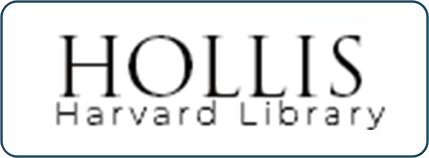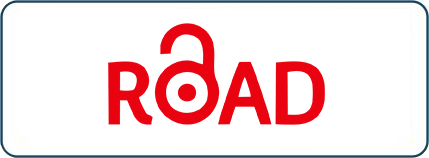Muslims’ Motivation to Patronize Wasiyyah (Islamic Will) Services: Does religiosity Acts as a Moderator in the Relationships?
DOI:
https://doi.org/10.33102/jmifr.512Keywords:
Religiosity, Self-determination theory, Wasiyyah, Consumer motivation, SatisfactionAbstract
Frozen assets in the country may be alleviated via wasiyyah services, which has long been considered a possible solution in Malaysia. However, despite the relevance of wasiyyah services in Malaysia, the penetration rate remains low. Self-determination and satisfaction in patronizing wasiyyah services are the focus of this research. There was also an investigation into how religiosity moderates the relationship between self-determination and satisfaction. The research framework consists of 8 hypotheses that predict four direct relationships and four moderation effects. The model used the principle of self-determination to explain the relationships. This research focuses on Muslim consumers in Malaysia who have already patronized wasiyyahservices. The data was gathered using an online survey, and 180 valid data were used to validate the study model. Data analysis was conducted using SPSS v27 and SmartPLS 4.0. The results stated that SDT constructs which are autonomy and relatedness have significant and positive and influence over satisfaction in patronizing wasiyyah services. However, competence did not have positive and significant influence over satisfaction. Furthermore, no moderation effect of religiosity could be found in this study. Findings suggest that religiosity has not moderated the relationship between SDT constructs and satisfaction. It is intended that this research can provide insights for industry players to enhance and develop sustainable marketing strategies to entice more Muslims to utilize the wasiyyah services, which might ultimately help in resolving the frozen asset problems.
Downloads
References
Abd Wahab, N., Hashim, S., & Abd Ghani, N. A. (2019). What influence Muslims to make wills?: Insights into its determinants. The Journal of Muamalat and Islamic Finance Research, 16(1), 37–52.
Ahmad, H. (2018). Religiosity as an intervening variable in the consumption pattern of Moslem community. Russian Journal of Agricultural and Socio-Economic Sciences, 4(76), 220–225. https://doi.org/10.18551/rjoas.2018-04.23
Alam, S. S., Mohd, R., & Hisham, B. (2011). Is religiosity an important determinant on Muslim consumer behaviour in Malaysia? Journal of Islamic Marketing, 2(1), 83–96. https://doi.org/10.1108/17590831111115268
Alma’amun, S. (2012a). Analysing the practice of wasiyyah (Islamic Will) within the contextual form of Islamic estate planning in Malaysia: variations across control variables. Journal of Islamic Economics, Banking and Finance, 113(467), 1–23.
Alma’amun, S. (2012b). Searching for bequest motives and attitudes to leaving a bequest among Malaysian Muslims. Jurnal Ekonomi Malaysia, 46(1), 73–84.
Barthold, T. A., & Ito, T. (1992). Bequest taxes and accumulation of household wealth: US-Japan comparison. In The Political Economy of Tax Reform (pp. 235–292). University of Chicago Press. http://www.nber.org/books/ito_92-2
Baumeister, R. F., & Leary, M. R. (1995). The need to belong: Desire for interpersonal attachments as a fundamental human motivation. Psychological Bulletin, 117(3), 497–529. https://doi.org/10.1037/0033-2909.117.3.497
Bello, G. B., & Maiyaki, A. A. (2013). Readings in Islamic banking and finance. Readings in Islamic Banking and Finance.
Bouteraa, M. (2019). Barriers factors of wasiyyah (will writing): Case of BSN Bank. IBMRD’s Journal of Management & Research, 8(1), 1–11. https://doi.org/10.17697/ibmrd/2019/v8i1/142279
Burns, A. C., & Bush, R. F. (2000). Marketing research. Globalization, 1(7), 76–93.
Catharina, T., & Victoria, V. (2015). The Impact of Extrinsic and Intrinsic Motivation towards Job Satisfaction in Finance Service Department of PT. XYZ. IBuss Management, 3(2), 196–203.
Chen, B., Vansteenkiste, M., Beyers, W., Boone, L., Deci, E. L., van der Kaap-Deeder, J., Duriez, B., Lens, W., Matos, L.,
Mouratidis, A., Ryan, R. M., Sheldon, K. M., Soenens, B., van Petegem, S., & Verstuyf, J. (2015). Basic psychological need satisfaction, need frustration, and need strength across four cultures. Motivation and Emotion, 39(2), 216–236. https://doi.org/10.1007/s11031-014-9450-1
Chin, W. W. (2010). How to write up and report PLS analyses. In Handbook of Partial Least Square: Concepts, Methods and Application (pp. 655–690). Berlin: Springer.
Chong, S. C., Alma’amun, S., & Sia, B. K. (2015). Bequest motives among older Malays in Selangor. Jurnal Ekonomi Malaysia, 49(2), 17–26. https://doi.org/10.17576/JEM-2015-4902-02
Chuan, C. S., Seong, L. C., & Kai, S. B. (2014). Bequest perceptions among Malaysia’s urban older adults. Australian Journal of Basic and Applied Sciences, 8(5), 23–34.
Cohen, J. (1988). Statistical power analysis for the behavioral sciences (2nd ed.). Hillsdale. NJ: Erlbaum.
Creswell, J. D. (2017). Research design: Qualitative, quantitative, and mixed methods approaches. SAGE Publications.
Deci, E. L., & Ryan, R. M. (1985). Intrinsic motivation and self-determination in human behavior.
Deci, E. L., & Ryan, R. M. (2000). The “what” and “why” of goal pursuits: Human needs and the self-determination of behavior. Psychological Inquiry, 11(4), 227–268. https://doi.org/10.1207/S15327965PLI1104_01
Earl, S. R. (2017). The role of young adolescents’ psychological needs at secondary school: Applying basic psychological needs theory [Doctoral dissertation, University of Kent]. https://doi.org/10.1037/xge0000165
Farbodsouri. (2017). The relationship between internal motivation and customer satisfaction of posthaste purchase. International Journal of Scientific & Technology Research, 6(6).
Fornell, C., & Larcker, D. F. (1981). Evaluating structural equation models with unobservable variables and measurement error. Journal of Marketing Research, 18(1), 39–50. https://doi.org/10.20546/ijcrar.2016.409.006
Gagne, M. (2003). The role of autonomy support and autonomy orientation in the internalization of autonomous regulation for prosocial behavior. Motivation and Emotion, 27(3), 199–223.
Ghul, Z. H., Yahya, M. H., & Abdullah, A. (2015). Wasiyyah (Islamic Will) adoption and the barriers in Islamic inheritance distribution among Malaysian Muslims. International Journal of Humanities Social Sciences and Education, 2(1), 1–11. www.arcjournals.org
Gilal, F. G., Zhang, J., Paul, J., & Gilal, N. G. (2019). The role of self-determination theory in marketing science: An integrative review and agenda for research. European Management Journal, 37(1), 29–44. https://doi.org/10.1016/j.emj.2018.10.004
Hair, J. F., Black, W. C., Babin, B. J., & Anderson, R. E. (2018). Multivariate data analysis. Cengage Learning, EMEA. https://doi.org/10.1002/9781119409137.ch4
Hair, J. F., Hult, G. T. M., Ringle, C. M., & Sarstedt, M. (2017). A primer on partial least squares structural equation modeling (PLS-SEM). Sage Publications. https://doi.org/10.1080/1743727x.2015.1005806
Hair, J. F., Ringle, C. M., & Sarstedt, M. (2011). PLS-SEM: Indeed a silver bullet. Journal of Marketing Theory and Practice, 19(2), 139–151. https://doi.org/10.2753/MTP1069-6679190202
Hair, J. F., Risher, J. J., Sarstedt, M., & Ringle, C. M. (2019). When to use and how to report the results of PLS-SEM. European Business Review, 31(1), 2–24. https://doi.org/10.1108/EBR-11-2018-0203
Halvari, A. E. M., Halvari, H., Bjørnebekk, G., & Deci, E. L. (2010). Motivation and anxiety for dental treatment: Testing a self-determination theory model of oral self-care behaviour and dental clinic attendance. Motivation and Emotion, 34(1), 15–33. https://doi.org/10.1007/s11031-010-9154-0
Harun, T. W. R., Rashid, R. A., & Hamed, A. B. (2015). Factors influencing products’ knowledge of Islamic banking employees. Journal of Islamic Studies and Culture, 3(1), 23–33. https://doi.org/10.15640/jisc.v3n1a4
Harun, W. A. H. W. (2019). Perancangan perwarisan Islam. In M. H. Mohamad & S. S. M. Supi (Eds.), Faraid dan Perancangan Pewarisan: Harta Beku, Bidang Kuasa dan Amalan di Malaysia (pp. 89–126). IKIM Press.
Henk, T. (1998). Motivation and satisfaction. In A Handbook of work and organizational psychology (pp. 253–289). London: Psychology Press.
Henseler, J., Ringle, C. M., & Sarstedt, M. (2015). A new criterion for assessing discriminant validity in variance-based structural equation modeling. Journal of the Academy of Marketing Science, 43, 115–135. https://doi.org/10.1007/s11747-014-0403-8
Kirkland, R. A., Karlin, N. J., Megan, B. S., & Pulos, S. (2011). Basic psychological needs satisfaction, motivation, and exercise in older adults. Activities, Adaptation and Aging, 35(3), 181–196. https://doi.org/10.1080/01924788.2011.596764
Lam, S. Y., Shankar, V., Erramilli, M. K., & Murthy, B. (2004). Customer value, satisfaction, loyalty, and switching costs: An illustration from a business-to business service contect. Journal of the Academy of Marketing Science, 32(3), 293–311. https://doi.org/10.1016/0002-8703(67)90033-6
Leung, L. S. K., & Matanda, M. J. (2013). The impact of basic human needs on the use of retailing self-service technologies: A study of self-determination theory. Journal of Retailing and Consumer Services, 20(6), 549–559. https://doi.org/10.1016/j.jretconser.2013.06.003
Lewis, J. R. (1993). Multipoint scales: Mean and median differences and observed significance levels. International Journal of Human-Computer Interaction, 5(4), 383–392. https://doi.org/10.1080/10447319309526075
Li, H., & Wen, H. (2019). How is motivation generated in collaborative consumption: Mediation effect in extrinsic and intrinsic motivation. Sustainability, 11(3), 640. https://doi.org/10.3390/su11030640
Lillard, L. A., & Willis, R. J. (1997). Motives for intergenerational transfers: Evidence from Malaysia. Demography, 34(1), 115–134. https://doi.org/10.2307/2061663
Luc G. Pelletier. (2002). A motivational analysis of self-determination for pro-environmental behaviors. In Handbook of Self-Determination Research (pp. 205–232).
Meters, C. (2022). Malaysia Population Clock. https://countrymeters.info/en/Malaysia
Miller, G. A. (1956). The magical number seven, plus or minus two: Some limits on our capacity for processing information. The Psychological Review, 63(2), 81–97. https://doi.org/10.1177/001088049003100202
Muslichah M., Rose Abdullah, & Lutfi Abdul Razak. (2020). The effect of halal foods awareness on purchase decision with religiosity as a moderating variable: A study among university students in Brunei Darussalam. Journal of Islamic Marketing, 11(5), 1091–1104.
Muslim, A. al-H. M. I. al-H. (2007). English Translation of Sahih Muslim (volume 4) (Hafiz Abu Tahir Zubair ’Ali Za’i (ed.); 1st ed., Vol. 4). Darussalam.
Naveed. (2016). Islamic wealth management: Growing stronger globally. Malaysia International Islamic Financial Centre. www.mifc.com
Nik Rahim Nik Wajis, Lukman Abdul Mutalib, Azman Ab. Rahman, Mualimin Mochammad Sahid, Nik Salida Suhaila Nik Saleh, Mohd Hazmi Mohd Rusli, Mahmoud Mohamed Ali, Muneer Ali Abdul Rab, Setiyawan Gunardi, Mariam Saidona
Tagoranao, Muhammad Aunurrochim Mas’ad Saleh, Lukmanul Hakim Hanafi, & Atiq Syamimi Ahmad. (2018). Harta tidak dituntut: Punca dan kaedah penyelesaiannya. Malaysian Journal of Syariah and Law, 7(1), 1–9. https://doi.org/10.33102/mjsl.v7i1.88
Oliver, R. L. (1980). A Cognitive Model of the Antecedents and Consequences of Satisfaction Decisions. Journal of Marketing Research, 17(4), 460–469. https://doi.org/10.2307/3150499
Oliver, R. L. (1993). Cognitive, affective, and attribute bases of the satisfaction response. Journal of Consumer Research, 20(3), 418–430. https://doi.org/10.1086/209358
Pamala, W., Madden, K. M., & Katie, M. (2010). Leaving a legacy: Bequest giving in Australia. Australasian Marketing Journal (AMJ), 18(1), 15–22.
Ping Jr., R. A. (1993). The effects of satisfaction and structural constraints on retailer exciting, voice, loyality, opportunism, and neglect. Journal of Retailing, 69(3), 320–352.
Rigby, C. S., & Ryan, R. M. (2018). Self-determination theory in human resource development: New directions and practical considerations. Advances in Developing Human Resources, 20(2), 133–147. https://doi.org/10.1177/1523422318756954
Rigdon, E. E., Schumacker, R. E., & Wothke, W. (2017). A comparative review of interaction and nonlinear modeling. In Interaction and Nonlinear Effects in Structural Equation Modeling (pp. 1–16). Routledge.
Ringle, C. M., Wende, S., & Becker, J.-M. (2015). SmartPLS 3, SmartPKS GmbH, Boenningstedt.
Ryan, R. M., & Deci, E. L. (2000). Intrinsic and extrinsic motivations: Classic definitions and new directions. Contemporary Educational Psychology, 25(1), 54–67. https://doi.org/10.1006/ceps.1999.1020
Ryan, R. M., & Deci, E. L. (2002). Overview of self-determination theory: An organismic dialectical perspective. Handbook of Self-Determination Research, 3–33.
Safiek, M. (2009). Relevancy and measurement of religiosity in consumer behavior research. International Business Research, 2(3), 75–84.
Salisu, T. M. (2016). Will-Making (Waṣiyyah) in Islam: a Juristic Exposition. Jurnal Syariah, 24(1), 157–180. https://doi.org/10.22452/js.vol24no1.7
Schultz, P. P., Ryan, R. M., Niemiec, C. P., Legate, N., & Williams, G. C. (2015). Mindfulness, work climate, and psychological need satisfaction in employee well-being. Mindfulness, 6(5), 971–985. https://doi.org/10.1007/s12671-014-0338-7
Sekaran, U., & Bougie, R. (2016). Research methods for business: A skill building approach. John Wiley & Sons. https://doi.org/10.1007/978-94-007-0753-5_102084
Sekaran, U., & Bougie, R. (2019). Research Methods For Business: A Skill-Building Approach.
Shaughnessy, J. J., & Zechmeister, E. B. (1997). Research methods in psychology (4th Editio). McGraw-Hill.
Spence, C. J. (2014). The role of intrinsic and extrinsic motivation focusing on self-determination theory in relation to summer bridge community college students. In Electronic Theses, Projects, and Dissertations.
Sweeney, J. C., Webb, D., Mazzarol, T., & Soutar, G. N. (2014). Self-determination theory and word of mouth about energy-saving behaviors: An online experiment. Psychology and Marketing, 31(9), 698–716. https://doi.org/10.1002/mar.20729
Taljaard, H., & Sonnenberg, N. (2019). Basic psychological needs and self-determined motivation as drivers of voluntary simplistic clothing consumption practices in South Africa. Sustainability, 11(13), 3742. https://doi.org/10.3390/su11133742
Wehr, H. (1976). The Hans Wehr Dictionary of Modern Written Arabic (J. M. Cowan (ed.); 3rd edition)
Downloads
Published
How to Cite
Issue
Section
License
Copyright (c) 2023 Amalina Mursidi, Nur I'ffah Muhammad Nasir, Siti Salwani Razali, Suharni Maulan

This work is licensed under a Creative Commons Attribution 4.0 International License.















